Cover image: Urza’s Mine by Anson Maddocks
In this two-part article series, I take a look at the story that emerges on the flavor text of cards from Magic: The Gathering’s Antiquities set as an exercise in textual interpretation, with an occasional reference to the art or the names of cards without flavor text. In a perfect world, there would be time and space to look at all the art as well, but I will leave that to you, or to others, to do for yourself.
Of course, in 2022, with comic books, novelizations, subsequent sets, and an increasing wealth of lore, we know far more about the plot of Magic’s first original story. In 1994, however, players were left to haphazardly piece together the goings-on of the story from the promotional text on booster packs, the art and function of the cards, and flavor text.
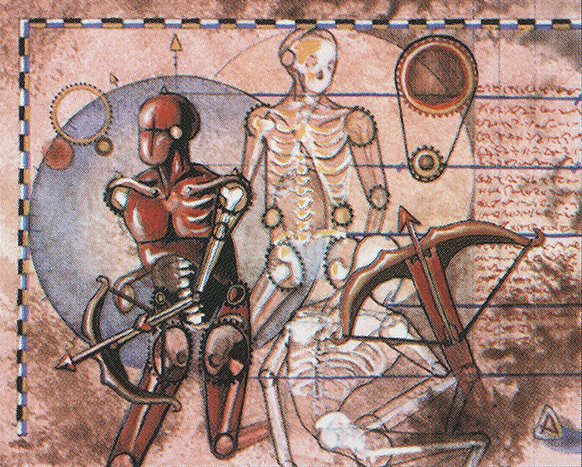
Urza’s Avenger by Amy Weber
In Part One, I took only the text from non-colorless cards—in this installment, I turn now to where the bulk of the story of the Brothers’ War (and the cards of Antiquities) could be found: the artifacts and lands. Furthermore, in the last installment, I focused on how each “color” found itself more-or-less representing a faction. On the artifacts and lands, however, we begin to have robust references to characters.
In Part Two, rather than simply meandering through the list of artifacts, I’ve organized the flavor text around people and places mentioned, and have attempted to construct some kind of narrative that resembles what I, then an 11-year old kid, might’ve been able to put together if I had access to all the cards and their flavor text.
From the Ruins of Calamity
So how robust (or how thin) was our knowledge of this lore in 1994?
With the wreckage (the cards) of the Brothers’ War before us, some people, places, and events begin to emerge.
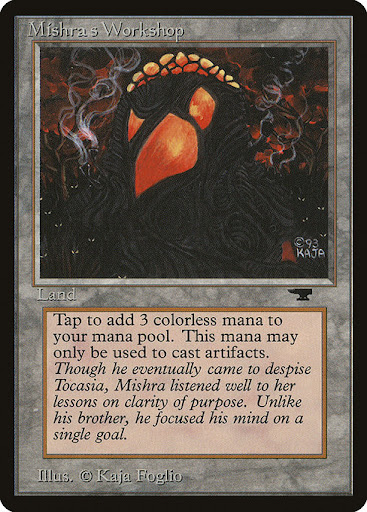
Sometime, long ago, two brothers, Urza and Mishra, were apprenticed to an artificer named Tocasia. From excavations, we know that Tocasia probably invented the Grapeshot Catapult, and that she taught lessons on clarity of purpose, resource gathering (Urza’s Tower). Tocasia made use of a kind of artificial creature called an Onulet, which given the similarities, may have been created after studying ancient thran relics called Su-Chi. During his time as Tocasia’s apprentice, Urza is thought to have created the first Ornithopter.
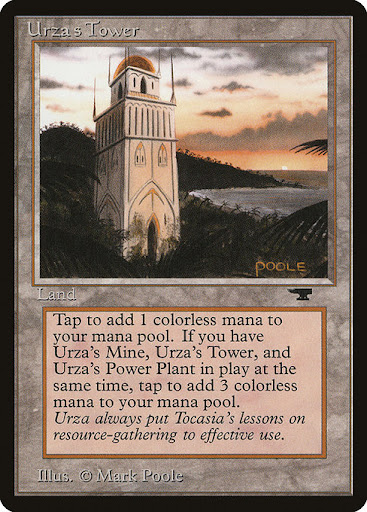
At some point in their childhood, Tocasia took her two young apprentices, the brothers Urza and Mishra, to the Caves of Koilos, where, in a place called the Hall of Tagsin, they each laid eyes on a powerful artifact: Urza, the Mightstone, and Mishra, the Weakstone. While we are not told precisely why, Mishra later came to despise Tocasia.
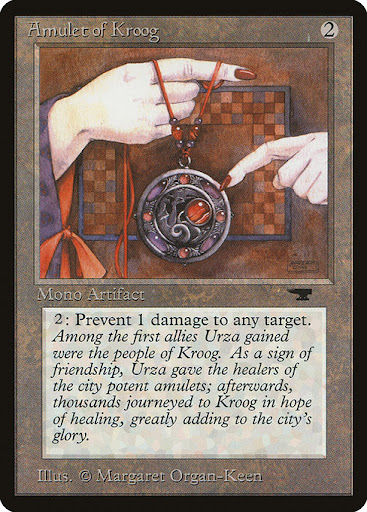
What exactly happened to precipitate the Brothers’ War is shrouded in mystery, but we know that in their conflict, “Among the first allies Urza gained were the people of Kroog.” A mighty city, even with many of its defenders elsewhere assisting Urza’s war efforts, many believed it impervious to Mishra’s forces. Unfortunately, the power of Mishra’s war machines proved too great.
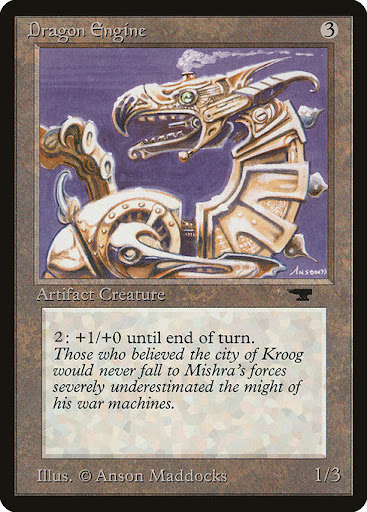
In the wake of this battle, Urza began to craft artificial guards, dubbed the Yotian Soldier and Urza’s Avenger, who could guard a city even if many of its defenders were away. Taking inspiration from the persistence of his humanoid allies, Urza focused much of energy on artificial soldiers, finding ways to create and preserve their artificial lives, perhaps with designs on outlasting his brother’s devastating siege engines. With the help of his assistant Tawnos, Urza’s faction in the Brothers’ War seems to be distinguished by versatility.
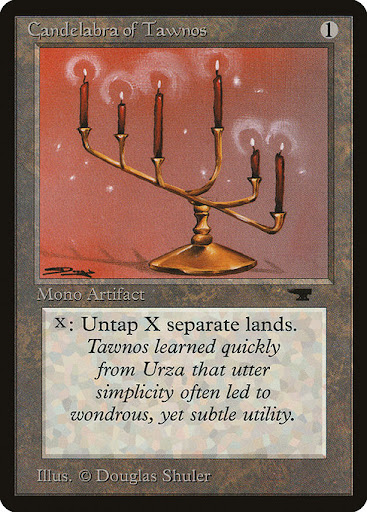
Perhaps because history is written by the winners, or at least the survivors, less is known about Mishra. Whereas Urza allied with Kroog, it is known that Mishra and his lieutenant Ashnod allied with Zegon.
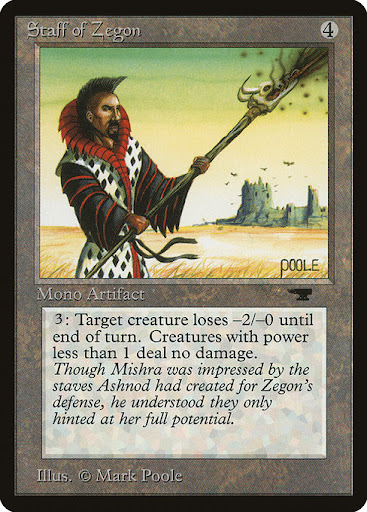
Ashnod was an artificer of great skill, able to harmonize her own inventions with Mishra’s to devastating effect. For example, the Staff of Zegon seemed to emulate the Weakstone, sapping strength from opposing forces. Likewise, her Cursed Rack seemed to make Mishra’s earlier torture techniques (e.g., The Rack) more effective while still being brutal in-and-of itself.
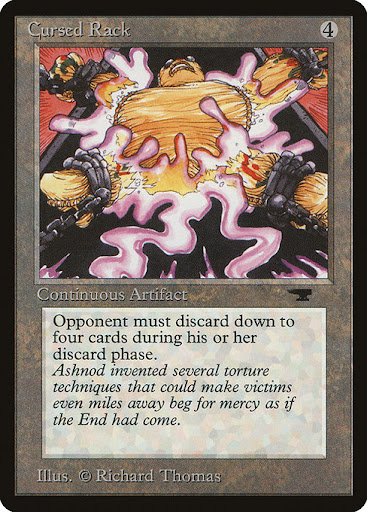
Ashnod’s Battle Gear inflicted great pain upon the troops that wore it, causing her to be “feared as much by her troops as by her foes.” Uncovered altars and transmogrifying tanks suggest that Ashnod was singular for her willingness to exploit Mishra’s troops as resources for the creation of artificial weapons for his armies.
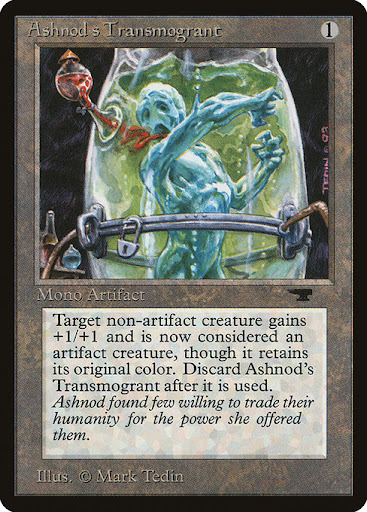
From these excavations alone, we don’t know the exact contours of the war. It is known, however, that because “artifact construction required immense resources,” “mines became common as cities during the days of the artificers.” In part because of the need for these resources, and in part because of the devastation wrought by the battles themselves, “Urza and Mishra made Dominia itself a casualty of war.”
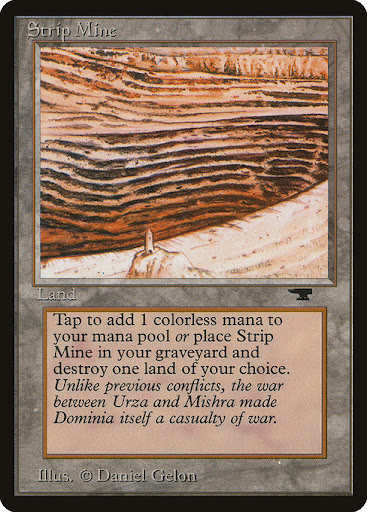
It is widely agreed that at some point, Urza and Mishra sought after ancient power to best one another. “From their earliest educations, the brothers had known that no human contrivance could stand against the true masters of Dominia.” These ancient masters had invested great power in the Golgothian Sylex, and its use promised the destruction of everything they had wrought thus far. Clearly, one would only use it in desperation.
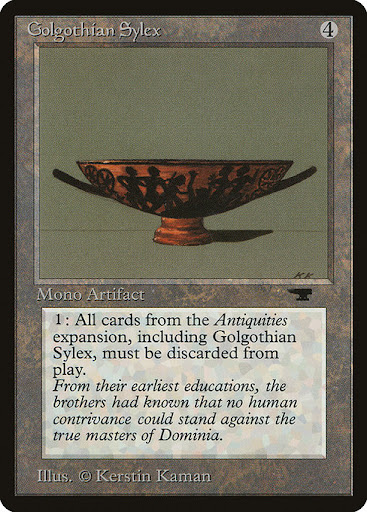
Ultimately, the excavation of Antiquities doesn’t tell us why Mishra’s efforts failed, but we do learn that he was defeated. Despite this, his methods heavily influenced the art of warfare in his time and in the eras to come. For example, “By the time Mishra was defeated, no mage was foolish enough to rely heavily on walls.”
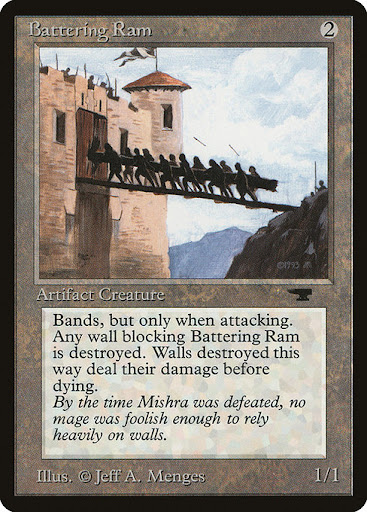
Unanswered Questions:
The events of Antiquities would be revisited again in 1995, with ARMADA’s Antiquities War four issue comic series. Hints trickled in on Ice Age’s Urza’s Bauble and Alliances’s artifacts, which referenced the characters Urza, Mishra, Ashnod, and the realm of Phyrexia. As time wore on, parts of the story would be retconned and refashioned.
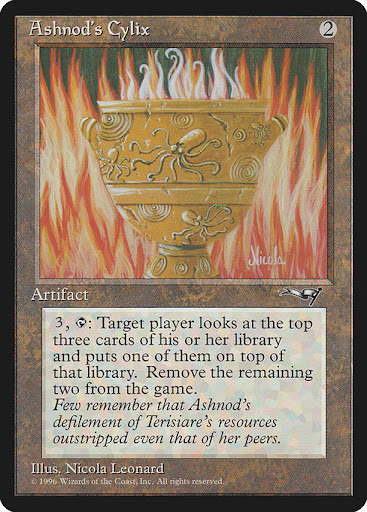
At the time, Urza seemed like the “good guy.” Mishra and Ashnod were depicted as cruel and inhumane, while Urza followed in his mentor’s footsteps. Urza seemed to feel regret for poor decisions and to look for ways to rectify his mistakes. He had artifacts (like Urza’s Chalice and Rakalite) that could prevent damage and gain life, whereas Mishra seemed entirely focused on destruction. Later lore would paint a far more complicated picture.
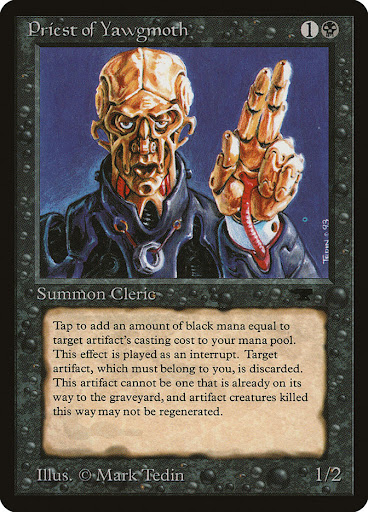
In 1994, however, with only the cards in front of us, there were many things that a player would be led to believe or be left to wonder. We were not certain how the war ended, only that Mishra lost. We had very little sense of the role Phyrexia played in the story on the cards, who Yawgmoth was, how Mishra and Urza related to various factions, or even how places like Lat-Nam, Argive, and Argoth related to other places we learned about in Limited Edition or in subsequent sets, like Legends and The Dark. Who is Feldon, and where is Ronom Glacier?
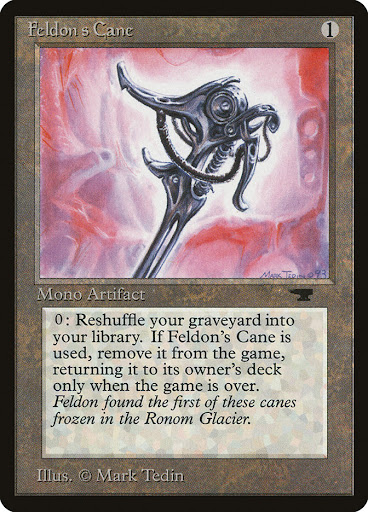
As Skaff Elias told Mark Rosewater on Drive to Work, some of this mystery is intentional: early Magic design presumed that the average player might open four packs of a given product—in Antiquities, that’s just 32 cards. The flavor text is designed to give players a general sense of the world in just those 32 cards, and, as Elias says, to emulate the feeling of archaeology, of interpretation through fragments.
Antiquities builds upon the atmosphere established in Limited Edition (which printed Glasses of Urza and Ankh of Mishra before having even imagined fleshing these names out as characters), and begins to give the players a glimpse into Dominia’s history. Much like Urza with the Jalum Tome: Our view is partial, we do not fully understand, but all of Magic feels richer for its being made.
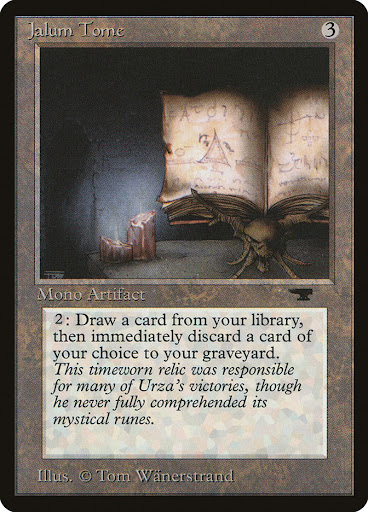
As the release of 2022’s The Brothers’ War nears, I’m eager to see how the story is told this time.
Recommended Media
Mark Rosewater w/Skaff Elias, Drive to Work #861, Antiquities
Jacob Torbeck, “The Grail Legend in Magic Lore”
Jeff Grubb, “The Brothers’ War”
Jacob W. Torbeck, Ph.D. (he/him) is a researcher and lecturer in philosophy and theology. Jacob hails from the Greater Chicago area, and loves playing Commander and Limited Magic, especially his Old School (93/94) and spooky cubes.

